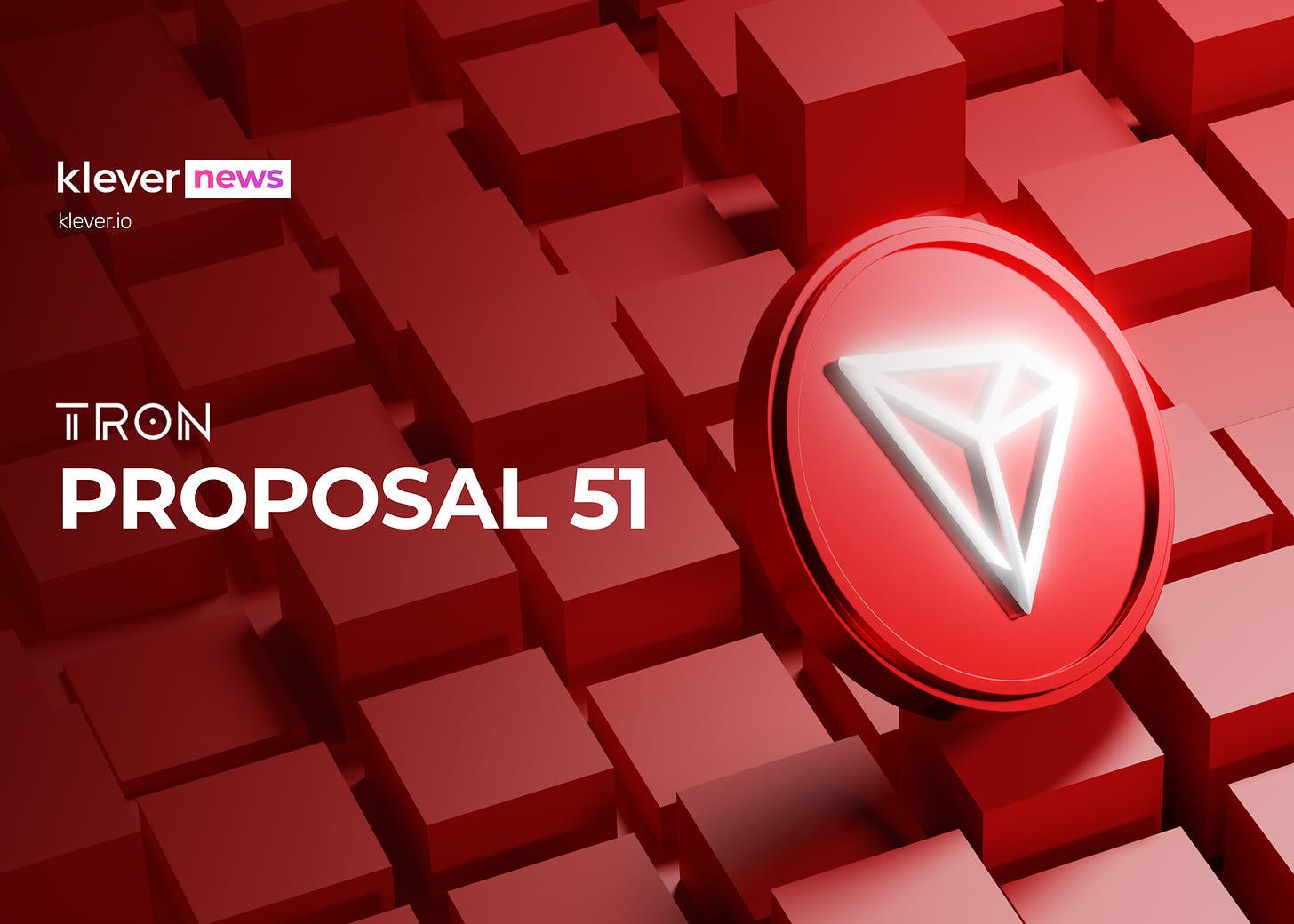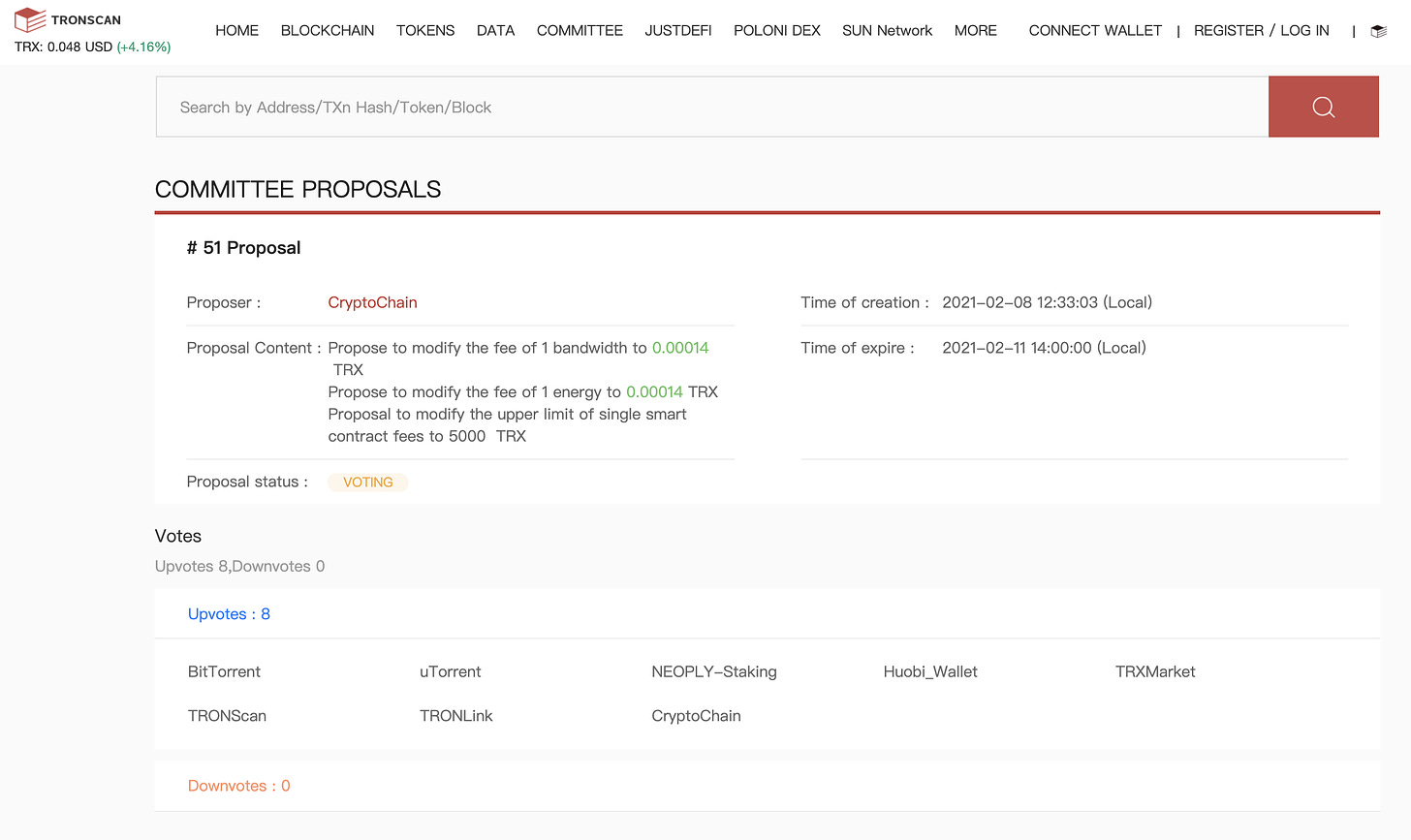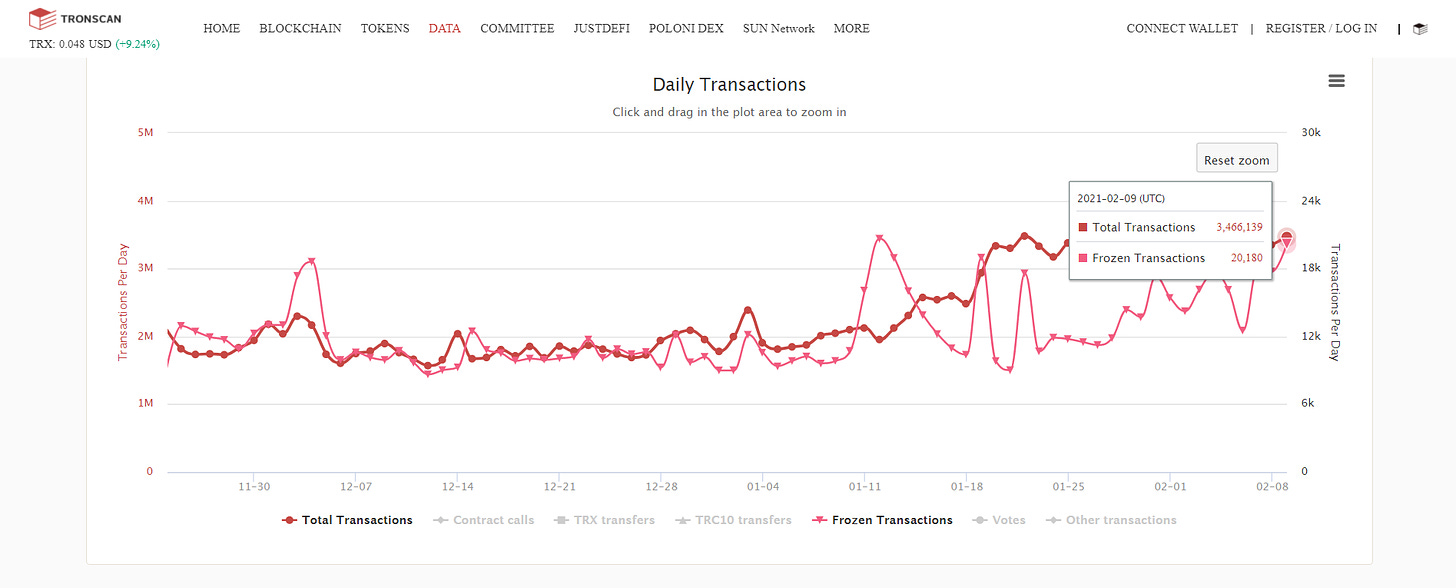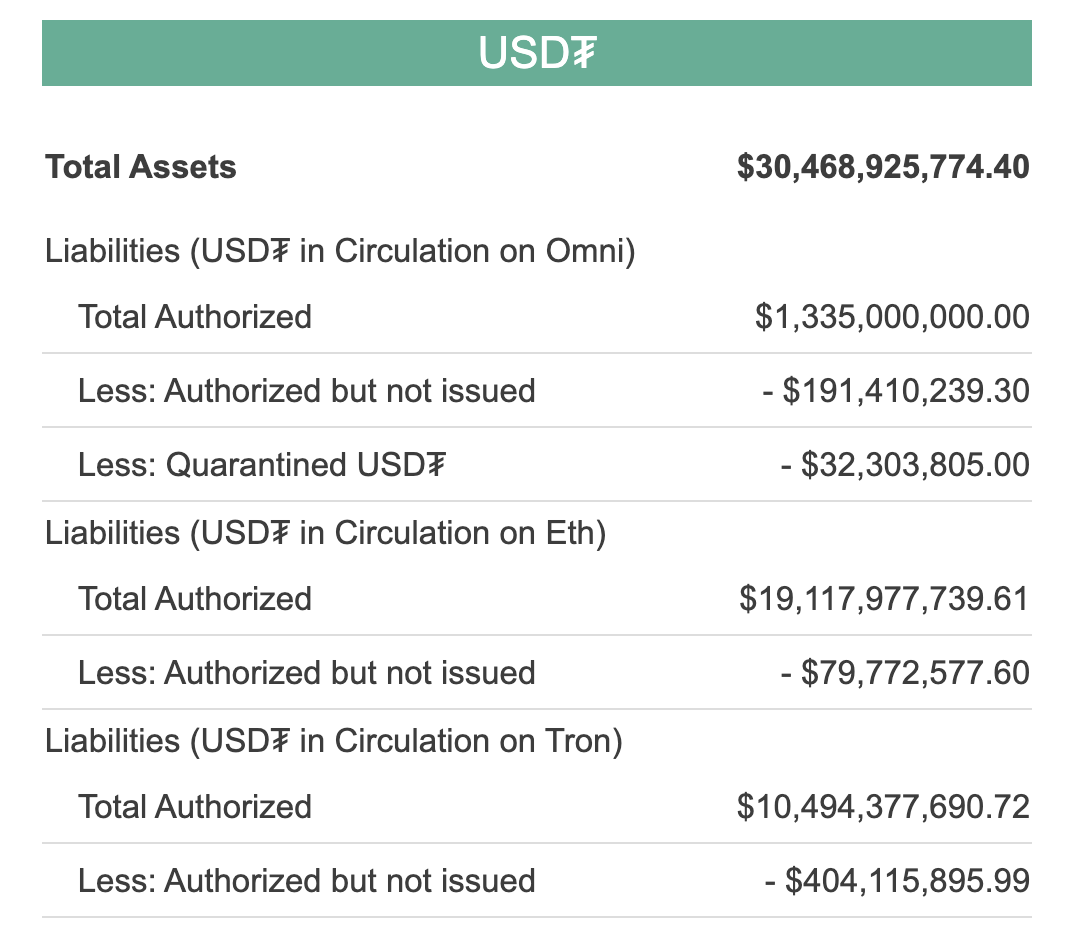Share
TRON
(TRX) has experienced a weekly value rise of 47%, and a new proposal
aimed at making TRX a deflationary asset is currently being voted on by
TRON’s Super Representatives (SRs), further increasing the potential
growth of TRX and TRX-based tokens.
Proposal 51 and its goals are simple and could be very impactful for the network:
Increase
the current near-minimal fees for bandwidth and energy by 3,5 times in
order to encourage higher freezing rate of TRX, diminish low-value
transactions (spam txs), increase security, reduce TRX in circulation,
and promote the increase of TRX’s value by eventually making TRX a
deflationary asset.
Proposal
51 was fielded by Klever’s own Head of Blockchain Research and
Development, Fernando Sobreira, under the TRON SR Crypto Chain.
The proposal suggests the following changes to the TRON protocol:
Modify the unit price of bandwidth, increase from the current 40sun to 140sun
Modify the unit price of energy, increase from the current 40sun to 140sun
Modify the configurable upper limit of fee limit, increase from the current 1000000000sun (1000 TRX) to 5000000000sun (5000 TRX)
To
explain bandwidth and energy in simple words, TRON bandwidth allows
users to perform transactions on the blockchain without paying extra gas
fees, while energy is a special resource used to process smart
contracts on the TRON network.
Proposal 51 is a result of
discussions initiated during the last SR meeting where TRON’s
representatives presented network statistics following the last energy
price increases, which showed that the last upgrade did not reduce
valuable transaction volume but it did increase the amount of frozen TRX
in the network.
Following the last TRON Upgrade implemented through Proposal 48,
the unit price of energy and bandwidth was increased from 10 sun to 40
sun on November 25, 2020. Since then, TRX’s daily supply output has been
greatly reduced due to more burning from resource fees. The number of
low-value transactions has also been significantly reduced. Security has
been improved with the increase of the freezing rate. Meanwhile, the
transaction volume has continued to rise, the increase in resource fees
has a positive effect on the network.
However,
although the situation of spam transactions has improved, such
low-value transactions still exist, and Proposal 51 is aimed at removing
their rate and mitigating the impact of such spam transactions. The
other primary goal is to have players freeze more TRX in order to pay
less transaction fees.
Potential
risks involved in Proposal 51 would be higher costs for developers,
users, and other players such as exchanges to use TRX and TRX-based
assets, but this can of course be mitigated by freezing more TRX.
Moreover,
the TRON network may be experiencing increased transaction fees similar
to other popular smart contract blockchain chains such as Binance Smart
Chain (BSC), although TRON blockchain still remains the faster in terms
of speed and delivery.
It is important to note
that TRON has grown exponentially over the past year to house the most
active addresses of any blockchain, besides Bitcoin.
For
instance, today on February 10, Bitcoin had 1.17 million active
addresses, TRON 634k and Ethereum 604k. Comparing transaction count
between these three dominant networks shows Bitcoin at 330k daily txs,
TRON 3.18 million txs, and Ethereum 1.23 million txs. It is becoming
clear that TRON’s speed for transaction delivery and relatively low
transaction fees compared to other blockchains has facilitated this
rise.
Moreover,
USDTt (USDT-TRON) currently holds $10.5 billion USDT in assets running
on the TRON network, which is roughly 1/3 of USDT-Tether’s total market
cap of $30 billion.
The rest is primarily running on top
of Ethereum with $19.1B, while the previously dominant BTC-based Omni
has fallen to only hold $1.3B USDT. Once again, this clearly shows that
low fees and fast transactions are what users and exchanges are seeking,
as well as choosing.
To
conclude, if the vote for Proposal 51 is passed, it will further
increase the network freezing rate and total frozen amount, reduce TRX
in circulation, promote the increase of TRX value, restrain the number
of low-value transactions and reduce their harm, and improve the
security and reliability of the TRON network.
Klever fully
supports Proposal 51 as part of our goal for the whole blockchain
ecosystem to grow together, increasing security, removing spam
transactions, and valuing cooperation between validators and other
players in the crypto industry.
Sincerely,
Misha Lederman
Director of Communications at Klever.io







